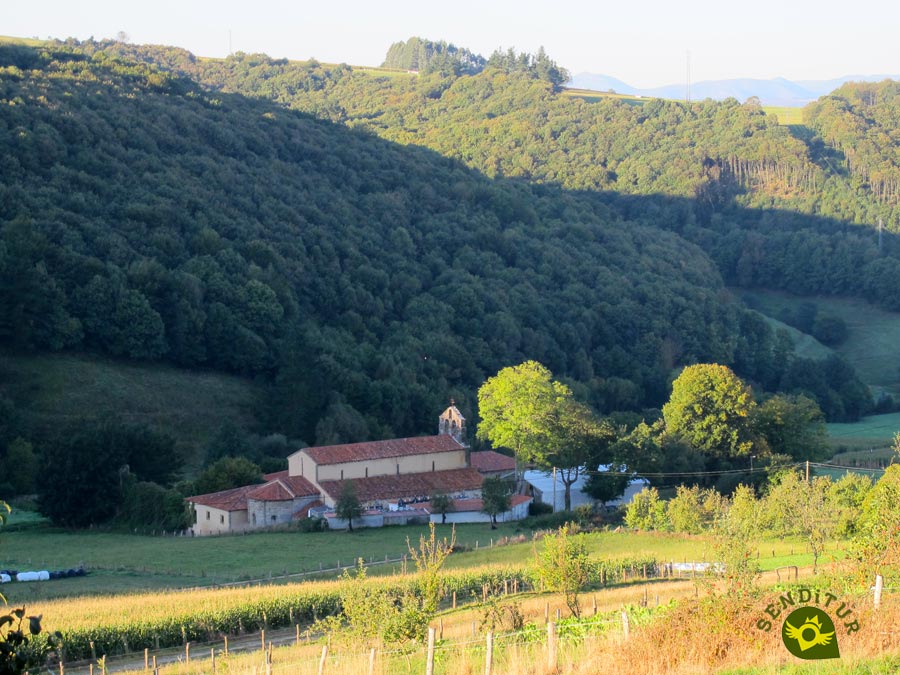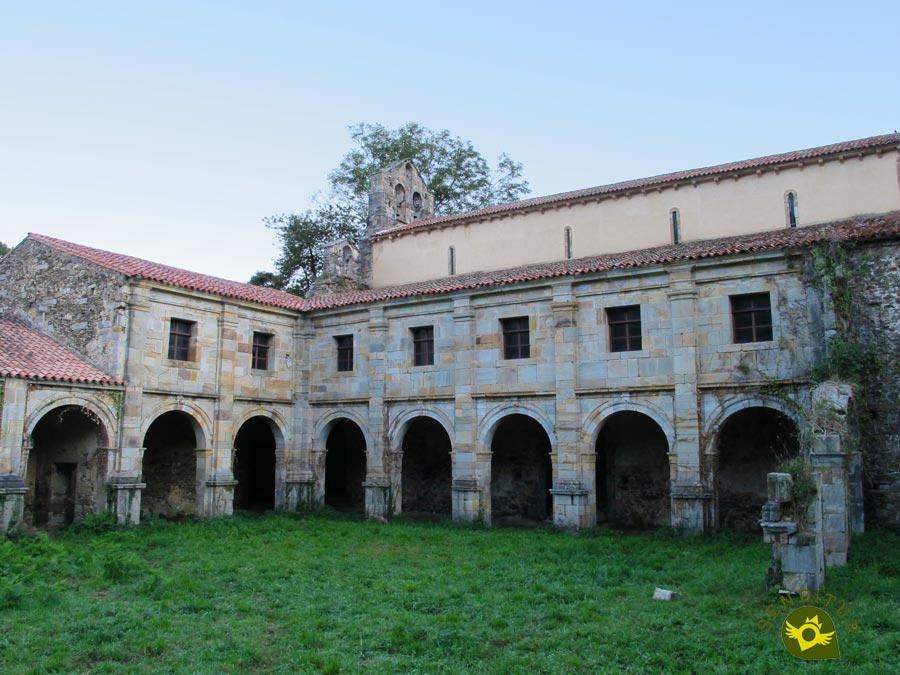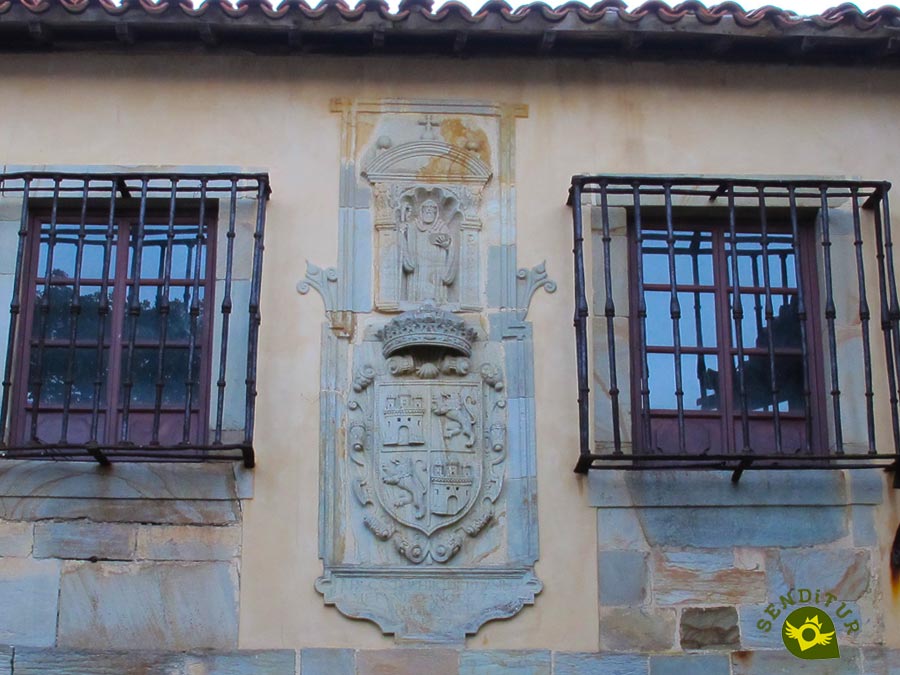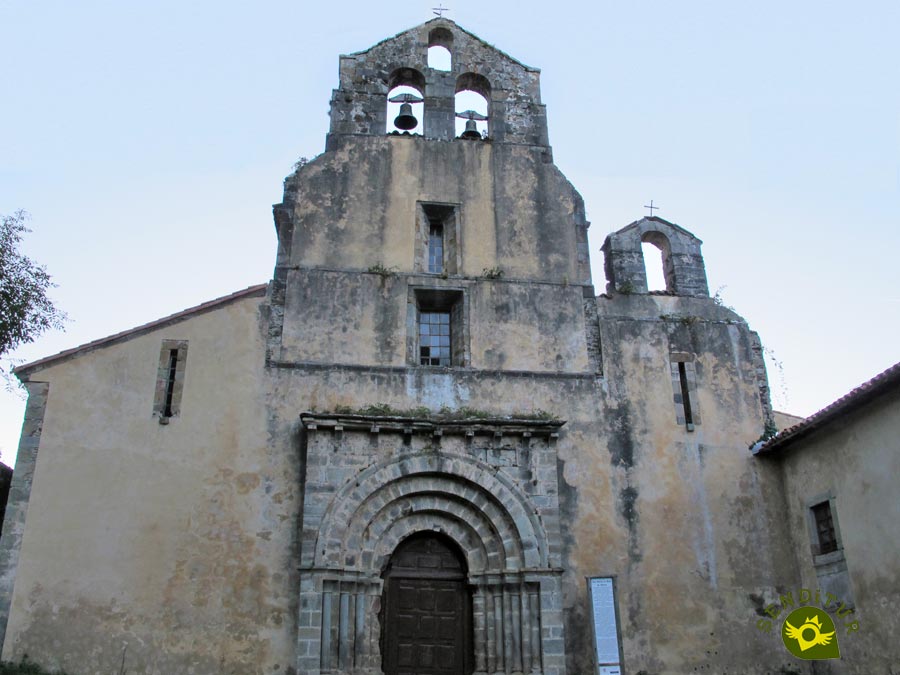Monastery of Santa María la Real of Obona
Obona, Principado de Asturias![]()
![]()
![]()
![]()
![]() (0)
(0)
A magical place of legends and mystery
Obona, Principado de Asturias![]()
![]()
![]()
![]()
![]() (0)
(0)
A magical place of legends and mystery
It is located in the village of Obona, belonging to the parish of the same name, in the council of Tineo. It is built on the edge of the Ardeña stream, in a river valley and surrounded by mountains and forest. The origin of the Monastery of Santa María la Real of Obona is confusing and already marked by the legend and mystery with which this place has been wrapped since its inception, which seems to have been in 781 and is attributed to Adelgaster, son of King Silo. The first written references date from the 11th century, when it is said that it now depends on the monastery of Corias, El Escorial asturiano. In the twelfth century, the monastery of Obona was an important Benedictine centre that included, in addition to the temple, the convent itself and its rooms, a cloister for monastic recreation and an inn. In the 13th century, Alfonso IX de León, after visiting the monastery, ordered that all pilgrims on their way to Santiago along this Primitive Way, must do so for the monastery, which made him gain power and economic and cultural control over the area.

In this period of splendour the monks innovated agricultural and livestock techniques, and within the monastic walls they gave classes in philosophy, Latin and theology. The struggles that lashed the whole kingdom in the late Middle Ages also made a dent in the monastery. With the intention of protecting it, the figure of the commendatory abbot was created, who was a lay nobleman who was named abbot and who was entrusted with the defence, even with soldiers, of the monastery. The monastery throughout its history has undergone reforms and enlargements but the most important was that of the seventeenth century, in it the only thing that remained was the church, the other buildings were demolished to build a new monastery that was never completed in its entirety. During the War of Independence the monastery was an improvised hospital and years later the monks abandoned it when the confiscation of Mendizábal. The building functioned until 1970 as national schools.
From this enigmatic monastery, its primitive Romanesque church, possibly from the end of the 12th century to the beginning of the 13th century, has become the parish church dedicated to San Antolín, and inside it keeps the image of a crucified Christ, a precious Romanesque carving perhaps from the 12th century that hangs over the High Altar, the Santo Cristo de Obona, as it is known. Next to the main chapel there is a sepulchre with an inscription that says: Here are the bones of Prince Adelgaster, son of King Silo of León and of Doña Brunilda his wife, who founded this house in 781.

The church preserves two doorways, the main one is located opposite the head of the temple that originally had three apses although one of them was thrown when the remodeling of the seventeenth century, the other is much simpler and gives directly to the unfinished Baroque cloister. The façade of the abbey house, adjacent to the church, has a beautiful coat of arms crowned by the image of San Benito and below it is possible to read an inscription referring to the date of foundation of the monastery and to Prince Adelgaster. You have to go through the rooms, stays and corridors, old stones covered with moss and ivy, go out to the cloister and imagine how it could have been to finish it, its gardens and fountain that never were, but that yes, with all the senses alert in this tour, Its walls keep the essence and energy of mystery and esoteric and maybe you discover a shadow, or you hear some voice or maybe from the fog the figure of a great white owl that lived in the cloister during time and that was related to the Guaxa, a feared vampire witch that adopted the form of the bird. The most probable is that none of this will happen, but what if you are going to take away from this visit is a very good sensation and a pleasant memory of one of the most important and ancient cenobios of Asturian history.

Tradition has it that the monks exercised the right to pernada on newly married women. As soon as they finished their wedding ceremony, they had to go to the monastery and stay there for eight days, during which the monks, one by one, enjoyed them. If at that time they became pregnant, the child, if male, was considered a son of the monastery with the consequent surrender to it. Inside the ruins, in one room there are signs that there were children's tombs, but it could be due to the fact that in the past the neighbors were buried in the floor of the temple, which was made of earth and was covered with wood. Each neighbour was assigned a burial place and when they went to religious services they occupied this place. Perhaps the children were buried separately.
At first this monastery housed friars and nuns with their abbot and abbess, but in the 11th century it became an exclusively male monastery and attached to the Benedictine rules. The nuns went to the abbeys of Babia and Avilés.

There are many stories that tell that the subsoil of the monastery is pierced by innumerable tunnels, a real labyrinth that covers a large expanse of land, one of the tunnels says that it reaches the monastery of Barcena, and that in this labyrinth is hidden everything that can be desired, great treasures of jewelry and gold, glory and endless power....It is difficult to find the entrance to it, but sometimes when some adventurer, eager for fame, has approached it, some mysterious monks have indicated the access to him. Entering, he has never been heard from again except for the laments that are heard in the silence of the night. Also in these tunnels, they say, was kept a fabulous library of great value.
MORE ROUTES AVAILABLE, DON'T MISS IT...
MORE PLACES AVAILABLE, DON'T MISS IT...
Obona can be reached by following the AS-350 that crosses the town. We can take this road shortly after leaving Tineo via the AS-217 towards Pola de Allande or from Bárcena del Monasterio on the AS-219 which connects this town with Pola de Allande and Luarca respectively. We also have a bus service that covers the Tineo-Navelgas line and stops in Obona. For further information, the telephone number of the company providing the service is 985 275 749.
Just when we reach Obona as we do from Bárcena del Monasterio and before entering the town we find the narrow asphalted and well signposted track that descends towards the monastery where we can park our vehicle. If we arrive from Tineo we will have to cross all the locality since the track of access that we will find to our arrival is a road without asphalt.
SENDITUR is not responsible for any variation in the information described, as well as for the misuse of its guides and recommends that everyone be responsible and prudent in carrying out the activity. Likewise, we invite you to document yourself with books and specialized guides to complement the information described. From the commitment of SENDITUR with Nature and the respect to the balance of the environment, SENDITUR urges you to travel in a responsible way, with low environmental impact and respecting at all times the Natural, Cultural and Social environment wherever you go. For any suggestion, SENDITUR invites you to send an email to
Continue watching …